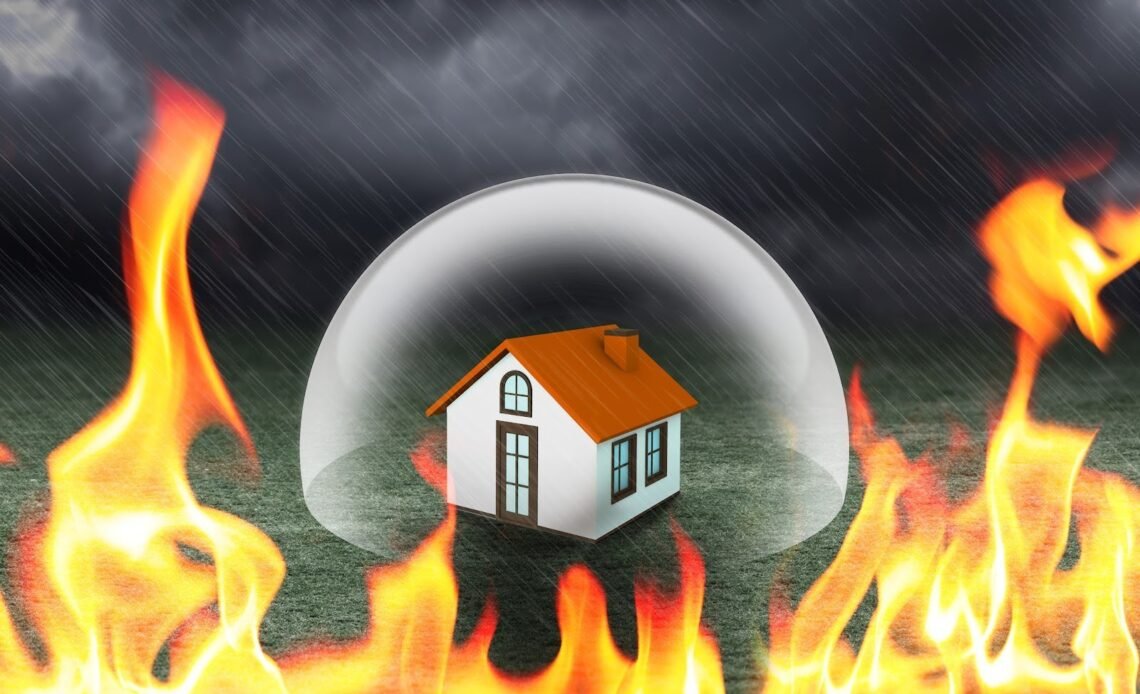When it comes to protecting your home or business, fire insurance and burglary insurance play vital roles. Fire insurance safeguards your property against damages caused by fire, explosions, and related perils, while burglary insurance shields you from losses due to theft and break-ins.
Before purchasing a fire insurance policy, it is important to understand the different types of coverage available, key features, and factors to consider.
What is Fire Insurance?
Fire insurance is a property insurance that insures against losses and damages caused by fire incidents. This policy reimburses for property damage, building, furniture, and other contents damaged by fire. Fire insurance policies are available for residential, commercial, and industrial properties, ensuring that your valuable assets are protected.
What is Burglary Insurance?
Burglary insurance protects your property against theft and burglary losses. Since fire insurance does not cover theft, having burglary insurance ensures comprehensive protection for your valuables and assets.
Key Features of Fire and Burglary Insurance
- Comprehensive Coverage: Fire insurance covers damage from fire, lightning, explosions, and sometimes natural calamities. Burglary insurance protects against theft and break-ins.
- Property Protection: Both insurance policies cover buildings, machinery, stock, and personal belongings.
- Financial Security: They help mitigate financial losses from fire damage or burglary and reduce out-of-pocket expenses.
- Add-on Covers: Many policies offer add-ons like coverage for smoke damage, water damage from firefighting, and business interruption losses.
- Claim Process: Policies include clear claim procedures to help you recover losses efficiently.
- Policy Customisation: You can choose coverage limits and types based on your needs and risk exposure.
Types of Fire Insurance Policies
Top insurers like TATA AIG offer two primary types of fire insurance policy, along with a burglary insurance add-on.
Business Guard Sookshma Package Policy
The Business Guard Sookshma Package Policy offers protection for small-scale businesses. It covers risks like fire, burglary, natural disasters, and accidental damage. It ensures comprehensive safety for business assets and properties.
Business Guard Laghu Package Policy
The Business Guard Laghu Package Policy is primarily for medium-sized businesses. It provides coverage for property damage, fire, theft, and liability risks. It safeguards business operations and reduces financial losses during unforeseen events.
Types of Fire Insurance Policies for Non-Fixed Assets
- Valued Policy: The insured value is agreed upon in advance. Compensation is based on this fixed value regardless of market fluctuations. It is ideal for unique items like artwork or jewellery.
- Average Policy: It includes an average clause where compensation is proportional if the insured value is less than the actual value. For example, if you insure only 80% of your property value, you get 80% of the loss amount.
- Comprehensive Policy: It covers fire damage plus allied perils like natural disasters, explosions, and sometimes theft or burglary, offering broad protection.
- Floating Policy: It is suitable for businesses with multiple locations. It covers a total sum insured across various sites without specifying individual amounts for each.
- Replacement Policy: Insurer covers the cost of restoring the insured property to its original state with a new item of the same kind and quality.
- Specific Policy: It covers a single property for a fixed sum, regardless of its market value. It is good for insuring individual high-value assets.
Factors to Consider Before Buying Fire Insurance
- Coverage Needs: Determine the worth of your assets and property to decide the correct sum insured.
- Policy Type: Select a burglary insurance policy that matches your risk profile and property type.
- Add-on Options: Check for additional covers like water damage or business interruption.
- Exclusions: Understand what is not covered in the policy to avoid surprises during claims.
- Premium Costs: Compare premiums from different fire insurance policies for the best value.
- Claim Settlement History: Research the insurer’s reputation for claim processing and settlement.
Common Exclusions in Fire Insurance
- Damage caused by riots, strikes, and malicious damage.
- Losses due to intentional fire setting or arson by the insured.
- Wear and tear, gradual deterioration, or inherent defects.
- Losses due to theft or burglary are not covered unless covered under a combined policy.
- Losses from pollution or contamination are usually excluded.
How to File a Claim for Fire Insurance?
- Inform the Insurer Immediately: Inform your insurance provider as soon as possible, ideally within 24 to 48 hours of the incident.
- Document the Loss: Collect evidence such as photographs, fire brigade reports, police FIR (if applicable), and any forensic reports.
- Submit Claim Form: Submit the claim form with details of the incident and attach all necessary documents.
- Assessment: The insurance provider will evaluate the damage and verify the claim.
- Settlement: Once verified, the insurer processes the claim and compensates you as per the policy terms.
Conclusion
Fire insurance and burglary insurance are essential for protecting your property and valuables from unexpected disasters. Familiarising yourself with fire insurance policies and their features helps you choose the right coverage. Always consider your property’s value, risks, and exclusions before buying a fire insurance policy. Prompt claim filing and proper documentation ensure smooth claim settlement.
Investing in these insurances provides peace of mind and financial security against fire and burglary-related losses. Stay informed and safeguard your assets wisely.







